 web3.0
web3.0 Covalent (CQT): Build a new on-chain protocol revenue system and commit to financial transparency
Covalent (CQT): Build a new on-chain protocol revenue system and commit to financial transparency
In the vibrant world of blockchain and decentralized technology, Covalent Network (CQT) is reshaping the on-chain economic system through its innovative protocol revenue model. Unlike traditional financial systems, this feature brings unparalleled accessibility, eliminating intermediaries and giving the community direct access to granular blockchain data.
Covalent’s value accumulation mechanism
At the core level, Covalent Network (CQT) plays a dual role. It is both a decentralized physical infrastructure and a middleware project. Promote the connection between the supply and demand sides of data on the chain. Analogous to well-known platforms such as Uber, Covalent connects query operators (supply side) with applications (demand side) and differentiates itself from traditional financial structures by extracting revenue at a certain rate as a way to accumulate protocol revenue. Come on.
For the foreseeable future, Covalent Network (CQT) will rely entirely on the Ethereum network and exclusively use $ETH tokens for network fees. Through its Ethereum Wayback Machine (EWM), an innovative solution designed to secure access to historical blockchain data, Covalent Network (CQT) ensures decentralization and avoids dependence on centralized entities. This strategic move not only solidifies the integration of the Covalent Network (CQT) system, but also actively strengthens Covalent Network (CQT)’s commitment to the Ethereum ecosystem by cultivating a symbiotic relationship, not only for the Covalent Network (CQT) system as a whole improvement, and is also expected to promote the broader development of the Ethereum network.

How does it work?
Covalent Network (CQT) uses $CQT as the governance and staking token. Operators participate in network operations by pledging tokens, and their work shares will be distributed according to their pledge ratio, while the income generated by demand parties entering the network through the protocol will be distributed to operators through a new profit sharing mechanism.
The main value accumulation mechanism process is as follows:
- The application directly queries the blockchain data API by interacting with the smart contract on the chain, and pays with stable currency.
- Pricing for APIs is determined by the carrier network.
- Stablecoins are converted to $CQT through the market buyback mechanism.
- $CQT is staked by the network operator as a security guarantee of its honest behavior.
- Earned $CQT are allocated to operators based on work completed.
- Operators sell a portion of the $CQT earned to pay for operating expenses, which again flows back into the ecosystem’s economy.
Convert demand into token value driver
It is worth noting that the demand side in Covalent Network (CQT) prices demand in US dollars or fiat currencies, ensuring Predictability of consumer bills under a variety of circumstances. Covalent Network (CQT) uses USD as the basis for collecting revenue, which is converted into $CQT (Covalent’s native token) through regular market purchases. $CQT is then distributed to validators as a network utility token, flowing back into the ecosystem and sustaining the operation of the network.
Covalent Network (CQT) provides fair compensation for those who actively participate in network operations, while the value accumulation of traditional models often favors passive stakeholders with limited or no direct participation in ecological construction. Obviously, Covalent Network (CQT) is fundamentally different from traditional economic models.
Q&A
Q: What is the difference between the decentralized model of Covalent Network (CQT) and the centralized model?
A: In the centralized model, passive token holders do not need to actively participate to benefit. The difference between Covalent and the centralized model is that its decentralized structure ensures that token holders are based on They are rewarded for their active contributions such as staking or running a validator node. This emphasizes active participation and establishes a fair and incentivized distribution model to ensure that the system operates efficiently in a decentralized manner.
Q: What is unique about Covalent Network (CQT) in terms of instant protocol revenue accumulation?
A: The more API calls made in the network, the more revenue is generated. By leveraging token incentives, costs will be reduced for users and long-term data availability will be transformed into a public benefit.
Q: Can you explain the current revenue accumulation method of Covalent Network (CQT) and the expected changes?
A: Currently, revenue accrual involves two steps: the demand side pays the protocol in USD as an API consumer, and converts it into $CQT tokens and distributes them to validators. As more validators join, our long-term goal is to build a more straightforward process that reduces reliance on centralized methods and builds larger decentralized systems over time.
About Covalent Network (CQT)
Covalent (CQT) focuses on blockchain data availability and supports millions of users to build a new economy. Since its establishment, Covalent has continued to help developers and analysts It provides comprehensive and real-time data on more than 200 chains.
The above is the detailed content of Covalent (CQT): Build a new on-chain protocol revenue system and commit to financial transparency. For more information, please follow other related articles on the PHP Chinese website!
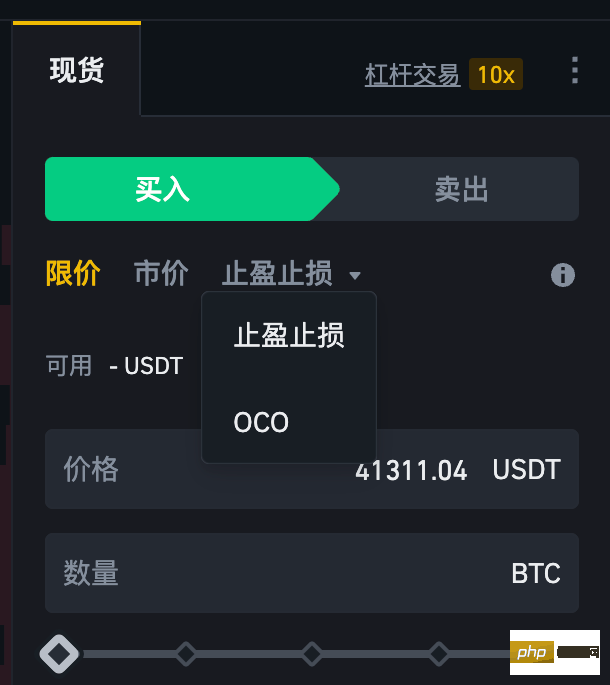 什么是OCO订单?Apr 25, 2023 am 11:26 AM
什么是OCO订单?Apr 25, 2023 am 11:26 AM二选一订单(OneCancelstheOther,简称OCO)可让您同时下达两个订单。它结合了限价单和限价止损单,但只能执行其中一个。换句话说,只要其中的限价单被部分或全部成交、止盈止损单被触发,另一个订单将自动取消。请注意,取消其中一个订单也会同时取消另一个订单。在币安交易平台进行交易时,您可以将二选一订单作为交易自动化的基本形式。这个功能可让您选择同时下达两个限价单,从而有助于止盈和最大程度减少潜在损失。如何使用二选一订单?登录您的币安帐户之后,请前往基本交易界面,找到下图所示的交易区域。点
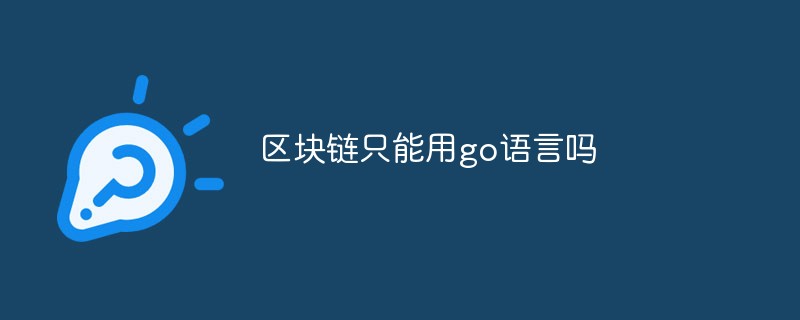 区块链只能用go语言吗Dec 27, 2022 pm 05:25 PM
区块链只能用go语言吗Dec 27, 2022 pm 05:25 PM不是。区块链是一种编程思想,原则上使用任何一种编程语言都可以实现,比如Solidity、C++、C#、Java、javascript、Go都可以实现区块链的开发;区块链技术涉及的面很广,而编程语言只是一种手段,把设计理念用代码呈现出来,做成产品服务用户。
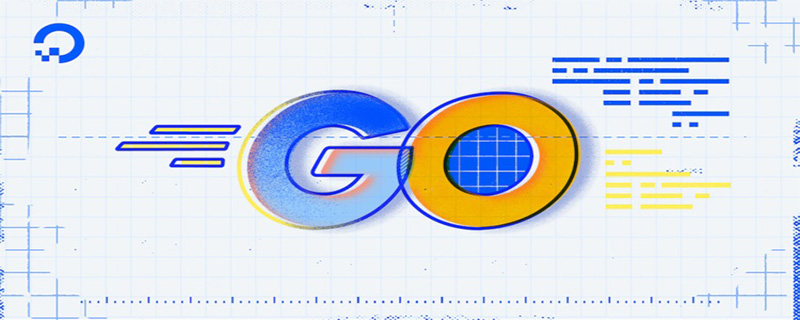 为什么用go语言写区块链Mar 04, 2021 pm 03:42 PM
为什么用go语言写区块链Mar 04, 2021 pm 03:42 PM原因:1、Go语言具有部署简单、性能优秀、并行执行性能好、良好语言设计、内置大量库、团队牛逼等优势。2、以太坊和超级账本都选择使用Go作为开发语言;这两大超级区块链的影响力很大,不仅在生态中占据了大的坑位,事实上还隐性的制定了区块链的标准。
 go语言能开发区块链吗Jan 03, 2023 pm 01:41 PM
go语言能开发区块链吗Jan 03, 2023 pm 01:41 PM可以开发。区块链是一种编程思想,原则上使用任何一种编程语言都可以实现,比如go语言、Solidity、C++、C#、Java、javascript都可以实现区块链的开发。Go语言是为了解决分布式计算,而区块链是典型的分布式数据存储系统,因此go语言能开发区块链。且Go易学易用,能很好的满足区块链行开发需要的“执行效率高、高并发、跨平台,网络开发要求高”等特点。
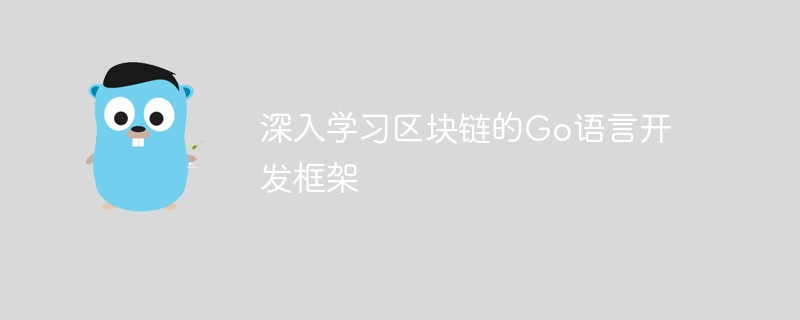 深入学习区块链的Go语言开发框架Jun 04, 2023 pm 08:01 PM
深入学习区块链的Go语言开发框架Jun 04, 2023 pm 08:01 PM区块链技术的出现,使得数字货币的应用成为可能,也在许多领域得到了广泛应用。随着区块链技术领域的扩大,开发人员对于更好的应用程序编写方式的需求也高涨起来。于是,一个叫做Go语言(简称Golang)的编程语言悄悄兴起,成为了区块链开发人员的最爱。Go语言是谷歌公司开发的一种系统级编程语言,自诞生以来,一直着重强调程序设计的简捷和高效。Go语言的优点包括:静态类型
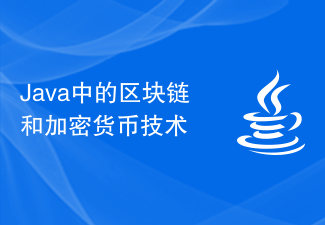 Java 中的区块链和加密货币技术Jun 09, 2023 am 09:56 AM
Java 中的区块链和加密货币技术Jun 09, 2023 am 09:56 AMJava是一种广泛使用的编程语言,它被许多公司和组织用作开发各种应用程序的工具。最近几年来,区块链和加密货币技术在全球范围内引起了大量的关注。Java的灵活性和多功能性使得它成为开发区块链和加密货币应用程序的优秀选择。区块链技术是一种安全的、去中心化的数据库,它可以存储和共享交易记录,而无需任何中央机构的干涉。Java提供了许多区块链开发框架,例如H
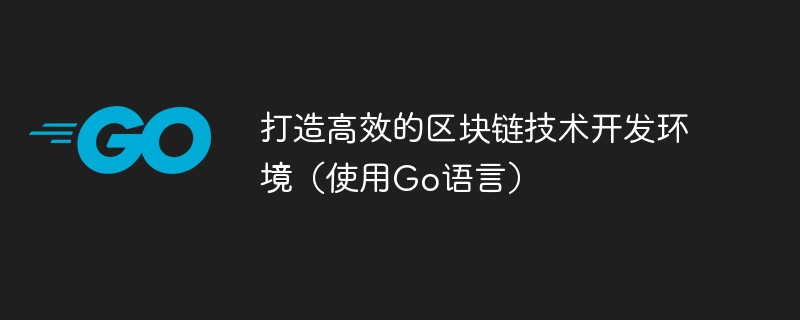 打造高效的区块链技术开发环境(使用Go语言)Jun 05, 2023 am 08:21 AM
打造高效的区块链技术开发环境(使用Go语言)Jun 05, 2023 am 08:21 AM随着区块链技术的发展和应用越来越广泛,有越来越多的人开始参与到区块链技术的开发中来。而要想打造高效的区块链技术开发环境,选择合适的开发语言和工具是非常重要的。Go语言正是一个很好的选择,因为它的性能很高,同时还有很多优秀的开源工具和库,能够大大提高开发效率。下面就来介绍一下如何打造高效的区块链技术开发环境,使用Go语言进行开发。一、选择Go语言在选择开发语言
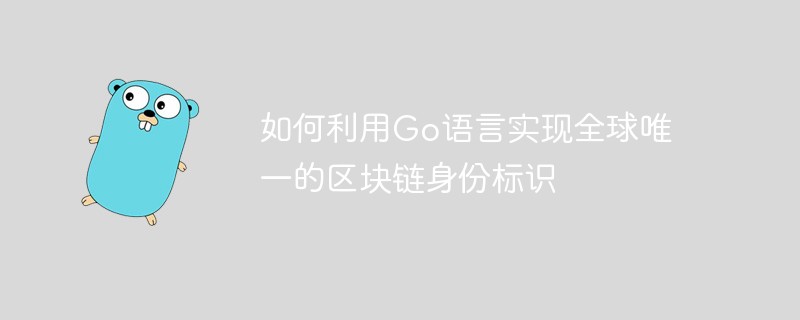 如何利用Go语言实现全球唯一的区块链身份标识Jun 04, 2023 pm 03:51 PM
如何利用Go语言实现全球唯一的区块链身份标识Jun 04, 2023 pm 03:51 PM区块链是一种去中心化的分布式账本技术,随着其应用领域的不断扩展,如何保障区块链参与者的身份安全问题也逐渐成为热门话题。本文将介绍如何利用Go语言实现全球唯一的区块链身份标识。一、为什么需要区块链身份标识在现有的互联网世界中,身份验证是一个非常重要的问题。通过用户名和密码等方式,用户可以登录到我门的网站上,从而使用我们的服务。但是,在互联网上,身份验证存在着

Hot AI Tools

Undresser.AI Undress
AI-powered app for creating realistic nude photos

AI Clothes Remover
Online AI tool for removing clothes from photos.

Undress AI Tool
Undress images for free

Clothoff.io
AI clothes remover

AI Hentai Generator
Generate AI Hentai for free.

Hot Article

Hot Tools

Notepad++7.3.1
Easy-to-use and free code editor

Atom editor mac version download
The most popular open source editor

Dreamweaver Mac version
Visual web development tools

Dreamweaver CS6
Visual web development tools

DVWA
Damn Vulnerable Web App (DVWA) is a PHP/MySQL web application that is very vulnerable. Its main goals are to be an aid for security professionals to test their skills and tools in a legal environment, to help web developers better understand the process of securing web applications, and to help teachers/students teach/learn in a classroom environment Web application security. The goal of DVWA is to practice some of the most common web vulnerabilities through a simple and straightforward interface, with varying degrees of difficulty. Please note that this software





